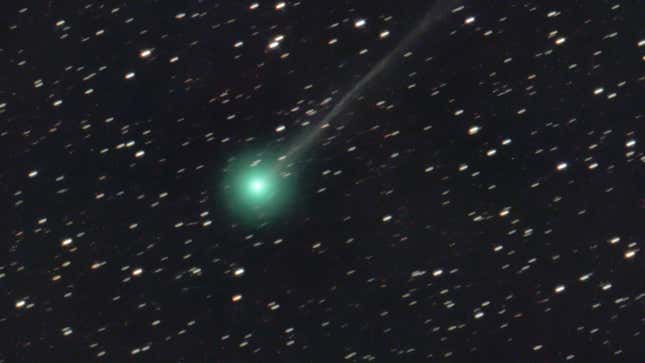
A comet recently discovered by Japanese amateur astronomer Hideo Nishimura is garnering attention from NASA and skywatchers alike.
Using a standard digital camera, Nishimura detected the celestial body on August 11 during a series of 30-second exposures, according to NASA. Though currently not visible to the naked eye, this status may soon change. NASA has noted the comet’s steady increase in brightness since its discovery. Furthermore, astronomers have now charted the comet’s future trajectory through the inner solar system.
“As the comet dives toward the Sun, it will surely continue to intensify and possibly become a naked-eye object in early September,” stated NASA. However, there’s a caveat for potential observers: the comet’s proximity to the Sun will mean it is best visible during the times of sunset or sunrise when the Sun’s glare is least obtrusive.
Cosmos Magazine reports that this comet will appear in the constellation Cancer in the predawn sky until about September 7, but its visibility will diminish by mid-September as it ventures closer to the Sun’s intense glare.
For those in the Northern Hemisphere eager to catch a glimpse, the best views might require the aid of telescopes or binoculars. Helpful apps, like Starwalk or Sky Guide, can guide skywatchers to the general vicinity of the comet in the sky. Fingers are crossed, however, that tools won’t be needed to spot Nishimura.
A significant event for the comet is on the horizon; its perihelion, or the point of closest approach to the Sun, is predicted for September 17. At this juncture, it will be approximately 0.22 AU (astronomical units) from the Sun, a distance just over one-fifth of the gap between Earth and the Sun, as noted by Cosmos Magazine. It takes an estimated 435 years for Nishimura to complete a single orbit around the Sun, making this a long-period comet.
As the comet is expected to pass closer to the Sun than Mercury—the innermost planet of our solar system—it’s entirely possible that the comet’s nucleus could disintegrate as a result of the intense solar heat. Keep that in mind should you be fortunate enough to gaze upon Nishimura in the coming days.

